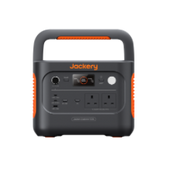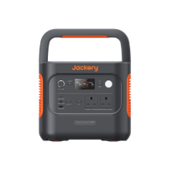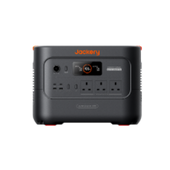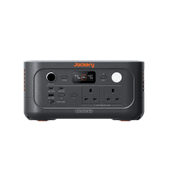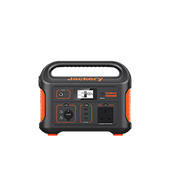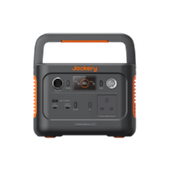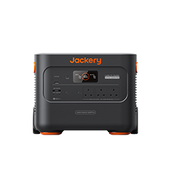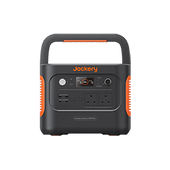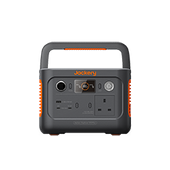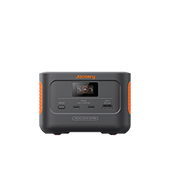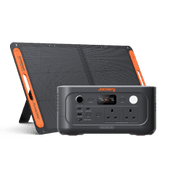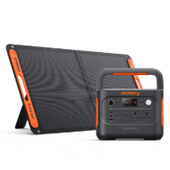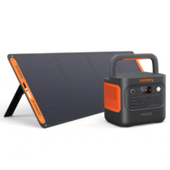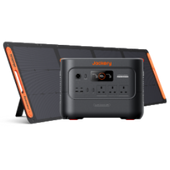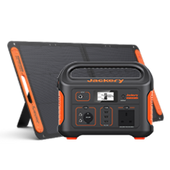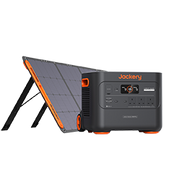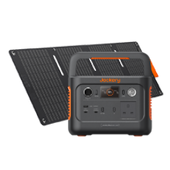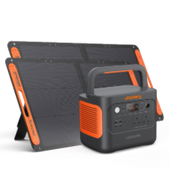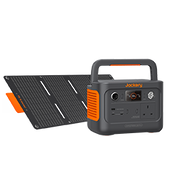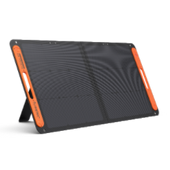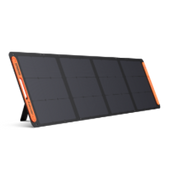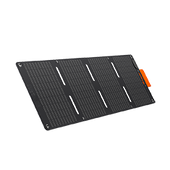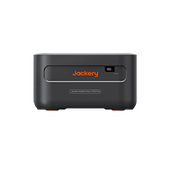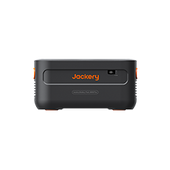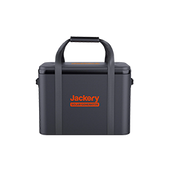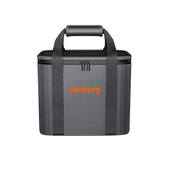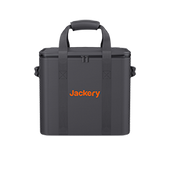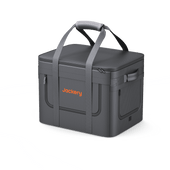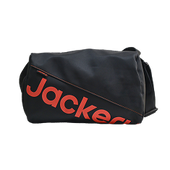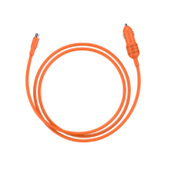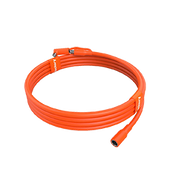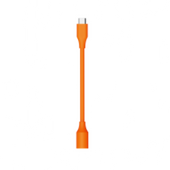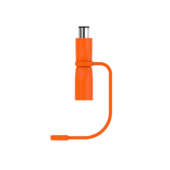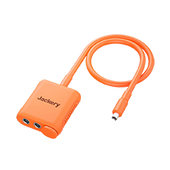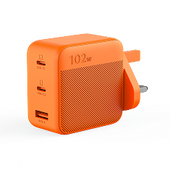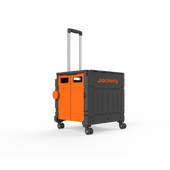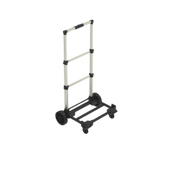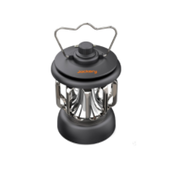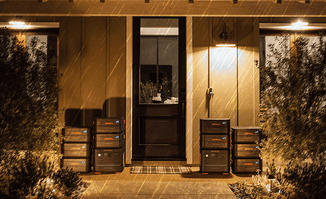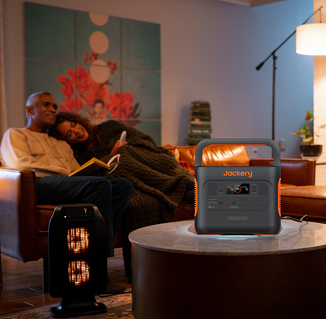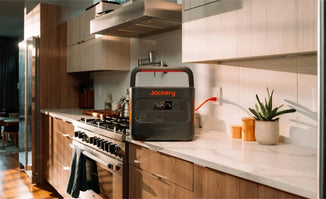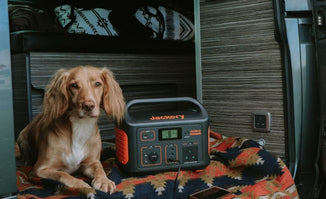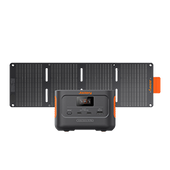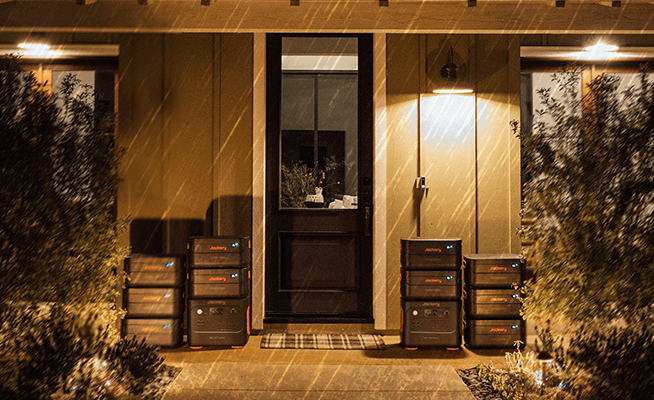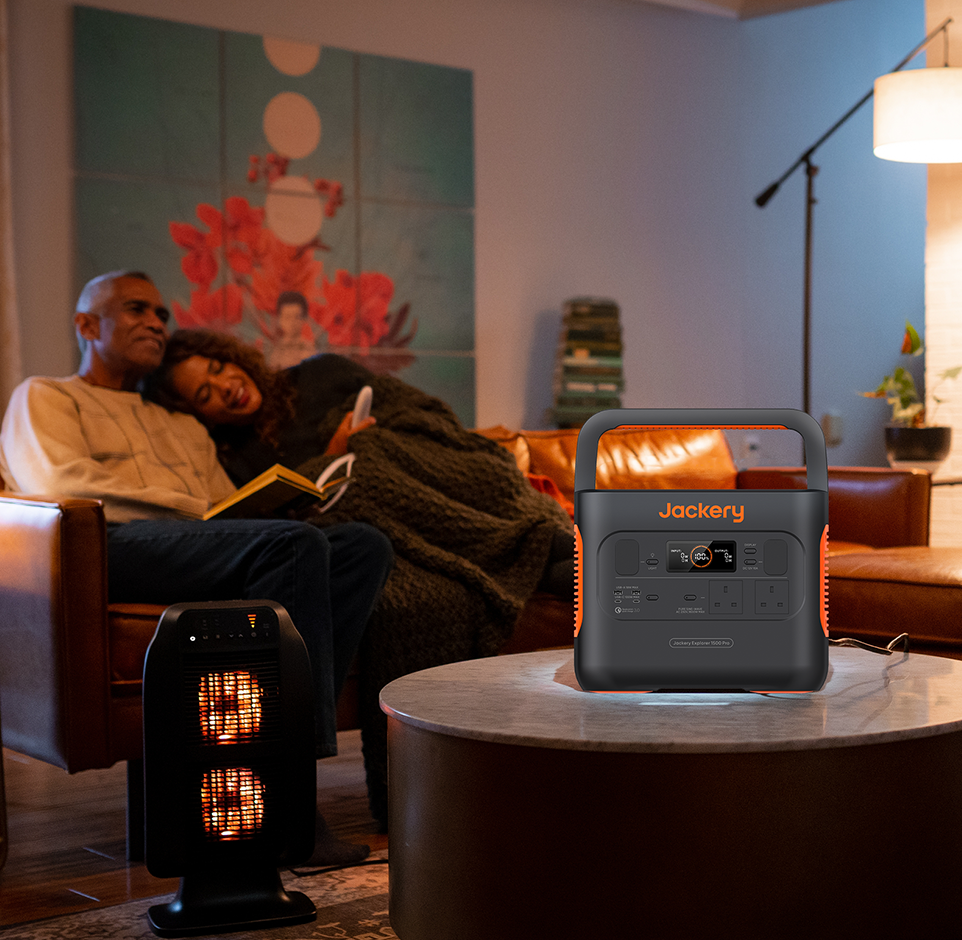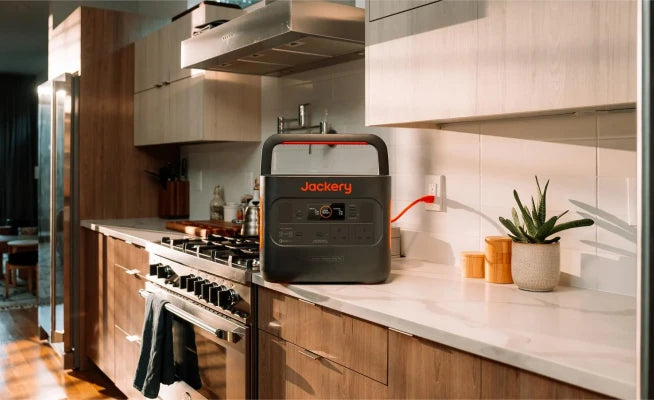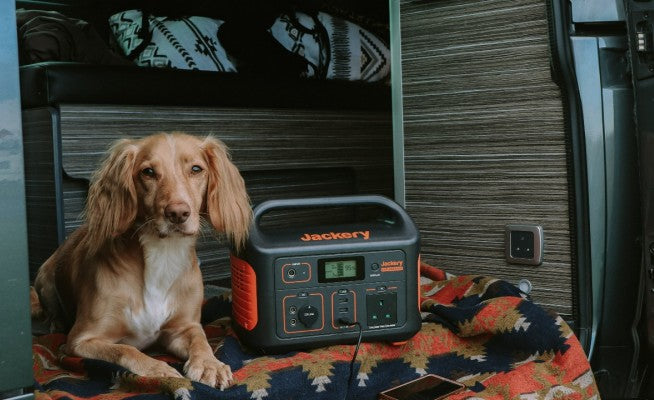Solar Powered Bug Zapper VS. Solar Generator for Bug Zapper
During hot seasons, insects and pests such as mosquitoes can be a significant problem for camping, hiking, backyard gathering, and nearly any other outdoor activity. Fortunately, solar-powered bug zappers are an excellent, portable solution to this problem.
A bug zapper consumes between 5W and 40W of electricity on average. This may seem like little, but the cost of operating an insect zapper can accumulate over time, mainly if used frequently.

This page explains what a solar-powered bug zapper is, how it works, and the solar-powered bug zapper vs. a solar generator for a bug zapper. We recommend Jackery solar generators for powering your bug zapper outdoors, specifically the Solar Generator 240, the most compact and lightweight model with a 240Wh capacity. It is portable and can power your bug zapper and other devices.
 |
|
|
- 240Wh capacity and lithium-ion battery - 200W rated power and 400W surge power - High conversion efficiency of up to 23% - 2*USB ports, AC outlet, and 12V car output - Reasonable price |
What is A Solar Powered Bug Zapper
At this time of year, during the height of mosquito season, the demand for indoor and outdoor mosquito control solutions is at an all-time high. Utilizing a solar-powered bug zapper is a popular alternative. Numerous solar bug zappers will also have a voltage rating indicating their power or efficacy in insect destruction. A solar insect zapper with a voltage rating of 3000 volts is typically more effective than one with a voltage rating of 900 volts.
Solar bug zappers are exceptionally effective and can destroy up to 10,000 insects overnight. While the primary function of a solar bug zapper is to eliminate insects, many of them also feature built-in lights that can serve as lanterns. This includes inexpensive solar insect zappers with a single lighting mode and pricier models with up to three lighting modes for various effects and applications.
How Does A Solar Powered Bug Zapper Work
A solar-powered bug zapper is identical to an electric bug zapper, except it converts sunlight into electricity via the top micro solar panels. The solar insect zapper contains a battery for storing energy for later use, particularly at night. Then, a zapper lures various insects into a confined space surrounded by metal grids and electrocutes them.
The exterior is typically made of plastic or metal and comes in various sizes and shapes to accommodate the additional components. To attract insects, the light bulbs emanate fluorescent lamps, such as mercury, neon, or ultraviolet light. The electricity passing through the wire meshes encircling the light bulb kills the insects.

How Many Watts Does A Bug Zapper Use
A bug zapper, also referred to as an electrical insect killer, is a device that employs high-voltage electric current to kill insects and other tiny pests attracted to light. The device functions by luring insects into a grid of wires with an electric charge, which kills them instantaneously upon contact.
A bug zapper consumes between 5 and 40 Watts of electricity on average. This may seem like little, but the cost of operating an insect zapper can accumulate over time, mainly if used frequently. The amount of electricity a bug zapper uses can vary significantly depending on the device's size, design, and frequency of use.
The type of bulb used to entice insects is one factor that can affect the amount of electricity consumed by a bug zapper. Some bug zappers utilize high-intensity LED ultraviolet (UV) light, which is more energy-efficient than incandescent and fluorescent bulbs and consumes less electricity.
How Much Solar Power Does A Bug Zapper Need
Smaller insect zappers may consume less electricity than their larger counterparts, as they typically contain fewer components and thus require less energy. However, larger bug zappers may be more effective at destroying insects due to their larger attracting and zapping surface.
The amount of electricity an insect zapper consumes depends on how frequently it is used. In the long run, an insect zapper used daily will consume more electricity than one used less frequently. The longer the device is on, the greater the electricity it consumes.
|
Bug Zappers |
Watts |
Length of Use |
Solar Power Needed |
|
Average |
5W-40W |
6H |
30W-240W |
|
Small Size |
5W-20W |
6H |
30W-120W |
|
Large Size |
40W-100W |
6H |
240W-600W |
Jackery Solar Generators for Bug Zappers
In the summer, insects such as mosquitoes and moths can be highly annoying and even transmit diseases. While shielding yourself from these insects indoors is relatively simple, you need a bug zapper for outdoor use. However, it can be expensive to frequently power a bug zapper, in which case a solar bug zapper is far more essential, as it only uses solar power, which is free and unlimited when exposed to sunlight.
Do you ever consider the disadvantages of solar bug zappers, such as their reliance on weather, location, angle, and the quality of the mini solar panels? A portable solar generator is preferable to power insect zappers and other outdoor appliances. It is also powered by solar energy, which is environmentally friendly.
Unlike conventional batteries, a solar generator, such as Jackery solar generators, comprises multiple components within a single body. An inverter, a battery, portable solar panels, and a charge controller are included. Solar portable generators are comparable to batteries but do not require professional installation and can be installed anywhere.
Jackery is one of the finest solar companies on the global market, and we have always been committed to offering our customers high-quality, user-friendly solar products. The Jackery solar generators consist of SolarSaga solar panels and an Explorer power station to convert and store solar energy. Our top considerations when manufacturing solar generators are durability, portability, and safety.

Jackery solar generators are commonly used for boating, camping, emergency power, and RV travel. A Jackery solar generator is an excellent power source when traveling, camping, or experiencing a power outage. The bug zappers are typically used outdoors, mainly when living off the grid or engaging in other outdoor activities. Hence, a Jackery solar generator is your best outdoor companion and can power more than just the bug zappers.
The Jackery Solar Generator 500 and 240 are recommended to power your insect zappers. Due to its relatively high capacity of 518Wh, the Solar Generator 500 is suitable for large insect zappers. It is a solar solution consisting of a Jackery Explorer 500 portable power station and SolarSaga 100W solar panels. This solar generator is a reliable and environmentally friendly power source for campers, RVs, or as a fallback during a power outage.
Solar Generators 240 is more portable than other solar generators because it is lighter and easy to carry. The Solar Generator 240 contains a 240Wh lithium-ion battery cell, requiring no fuel or gasoline, emitting no fumes, and making no noise. It is a reliable and clean power source for campers and RVs and a fallback power source when a power outage.
|
Series |
Ports |
Bug Zapper Watts |
Working Hours |
|
Jackery Solar Generator 500 (518Wh) |
AC Output: 110V, 60Hz, 500W (1000W Peak) USB-A Output: 5V, 2.4A DC Output: 12V, 10A Car Port: 12V, 10A |
Average: 5W-40W Small Size: 5W-20W Large Size: 40W-100W |
Average: 88H-11H Small Size: 88H-22H Large Size: 11H-4.4H |
|
Jackery Solar Generator 240 (240Wh) |
AC Output: 110V, 60Hz, 200W (400W Peak) 2*USB-A Output: 5V, 2.4A Car Port: 12V, 10A |
Average: 5W-40W Small Size: 5W-20W Large Size: 40W-100W |
Average: 40.8H-5.1H Small Size: 40.8H-10.2H Large Size: 5.1H-2H |
Solar Powered Bug Zapper VS. Solar Generator for Bug Zapper
Sitting on your back veranda on a warm summer evening is unparalleled until the insects begin to swarm. Using solar energy, solar-powered bug zappers keep insects at bay and away from you.
Solar insect zappers have an integrated solar panel typically positioned on the device's top to maximize sun exposure. The solar panel can collect energy from the sun and charge the battery by placing the insect zapper in a location that receives moderate to direct sunlight. According to the scientific report, the average sunny day can generate between 8 and 12 hours of power.
Solar bug zappers are ideal for both indoor and outdoor use. Utilize it in your garden, gazebo, patio, or backyard, or bring it along on your next camping or fishing excursion. However, there are several disadvantages to consider when selecting a solar-powered bug zapper, such as its ineffectiveness in poor weather, its unsuitability for some regions with frequent rainfall, and the fragility of its mini solar panels or battery.
Portable solar generators are preferable to solar insect zappers for powering bug zappers and other indoor or outdoor appliances. A solar generator can help you save money on your utility bills because this energy generation system uses only sunlight to generate electricity and is completely free.
|
Types |
Pros |
Cons |
|
Solar Powered Bug Zapper |
- Eco-friendly - Portability - Pocketbook friendly - Save electricity bills - Decoration function |
- Kills the wrong bugs - Require regular cleaning - Depend on direct sunlight, location, and angle of solar panels - Short lifespan - Need more space |
|
Solar Generator for Bug Zapper |
- Eco-friendly - No fuse, no pollution - No installation & maintenance - Work on any conditions: no restriction on weather & location - Cost-effective - Not merely power bug zapper, but most appliances - Long lifespan |
- Some solar generators with large capacities may cost a little (but are cost-effective in the long term) |
Solar Powered Bug Zapper
A solar-powered bug zapper is a highly effective way to eliminate insects and other pests at night in your outdoor spaces while camping or picnicking. The solar-powered technology offers a practical, eco-friendly, and effective method for keeping your environment from bothersome insects.
The solar rechargeable bug zapper attracts insects with ultraviolet light, which is then destroyed by an electric shock. Typically, the device contains a solar panel that absorbs sunlight during the day and stores it at night to fuel the zapper. There are solar bug zapper UV lamps, portable solar bug zapper lanterns, and outdoor mosquito zappers, each with a unique illumination and function.
Pros:
- The solar-powered, 100 percent renewable energy bug zappers emit no harmful chemicals or fumes.
- Unlike conventional bug zappers, solar bug zappers are a safe and eco-friendly way to keep your outdoor space from insects.
- You will not need to replace batteries or provide electricity to the device.
- Many solar bug zappers have aesthetically pleasing designs, making them an excellent complement to your outdoor space.
Cons:
- The solar panels atop the solar insect zapper require direct sunlight for absorption.
- Don't work on cloudy and rainy days or even at night.
- Its micro solar panels are too fragile for long-term use.
- Some solar bug zappers may eliminate beneficial insects and mosquitoes.
- The majority of solar bug zappers have a limited lifespan.
Solar Generator for Bug Zapper
Because solar-powered bug zappers are ineffective, have fragile mini solar panels, and are relatively new to the market, it is prudent to use a portable solar generator to charge bug zappers. Solar energy has captivated the attention of millions of individuals, and its popularity is rapidly expanding. This rapid increase in popularity is the most effective method to persuade those skeptical of solar generators.
The generation of energy begins with portable solar panels. The solar panels contain photovoltaic (PV) cells that convert incident sunlight to electricity. Since solar cells do not rely on changing magnetic fields to generate electricity, as do gas generators, solar panels produce direct current. Jackery is a solar company that manufactures high-quality solar products.

People frequently overlook the added convenience solar generators from Jackery provide. Due to their portability and lightweight, portable solar panels can be set up outside quickly and easily, allowing you to get your solar generator system up and running in no time. As stated, you can choose between the Jackery Solar Generator 500 and 240 to effectively fuel solar bug zappers.
Pros:
- The portability of solar generators makes them ideal for outdoor use.
- They require minimal installation and minimal maintenance.
- Cleaning solar panels and power stations is simple.
- Solar portable generators typically last between 25 and 35 years.
- They are known for their silent and odorless operation.
- Solar generators are powered solely by sunlight and generate no pollution or emissions.
Cons:
Some high-capacity solar generators are relatively costly but cost-effective over the long run.
Solar Powered Bug Zapper FAQs
These are the most commonly asked questions regarding solar-powered bug zappers:
1. What size of solar generator do I need to power a bug zapper?
When deciding how to power your bug zapper with solar energy, it is crucial to estimate the wattage of your bug zapper's energy consumption and select the appropriate-sized solar generators. Typically, an insect zapper uses between 5W and 40W. All Jackery solar generators can easily power it so that you can choose one according to your budget and needs.
How to determine how long the Jackery solar generator will need to charge your bug zapper:
Working hours = solar generator capacity * 0.85 / your bug zapper's wattage
The Jackery Solar Generator 240 (240Wh capacity) powers your bug zapper (40W). The number of equivalent working hours is 5.1 (240Wh*0.85/40W).
2. How long does a solar bug zapper last?
Solar bug zappers have varying lifespans based on their brands, sizes, functions, and voltage. Some solar insect zappers include an attractant cartridge containing octanol, an active ingredient in many pesticides, to lure mosquitoes. Although each cartridge only lasts 30 days, replacements are available. However, some large bug zappers with light bulbs have impressively extended lifespans of up to 5,000 hours, whether tiny or enormous. Solar bug zappers have shorter lifespans than solar generators, which can power all bug zappers with 25-35 year lifespans.
3. How to choose the best solar bug zappers?
There are numerous considerations when purchasing a solar bug zapper:
- Wattage and Voltage:To kill mosquitoes, all available insect zappers, including the solar-powered ones listed here, use a high-voltage current. Consequently, a higher voltage rating results in enhanced performance and efficacy.
- Battery: Another crucial consideration when selecting a solar insect zapper is its battery and power options.
- Lighting: The solar bug zapper's built-in lighting makes it a more functional and valuable outdoor implement. However, not all of these lights in solar insect zappers are identical.
Final Thoughts
Solar-powered bug zappers have been installed in many locations because they effectively eliminate pests and insects. The solar bug zappers have small solar panels on the top surface and a battery for power storage, allowing them to absorb sunlight during the day and power the bug light at night. Nevertheless, given the disadvantages mentioned above of solar bug zappers, it is recommended that you choose a Jackery solar generator to power all kinds of bug zappers and other indoor & outdoor appliances.

